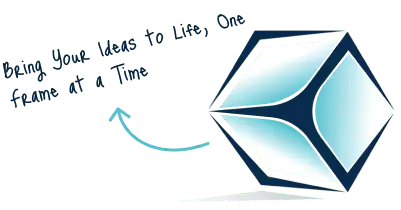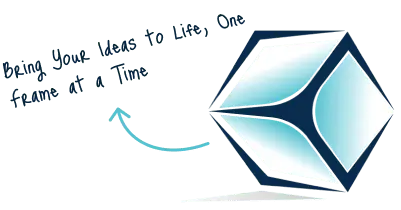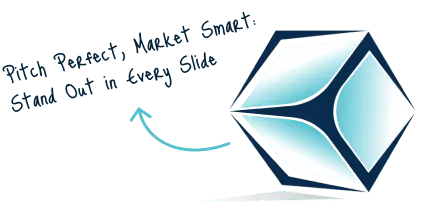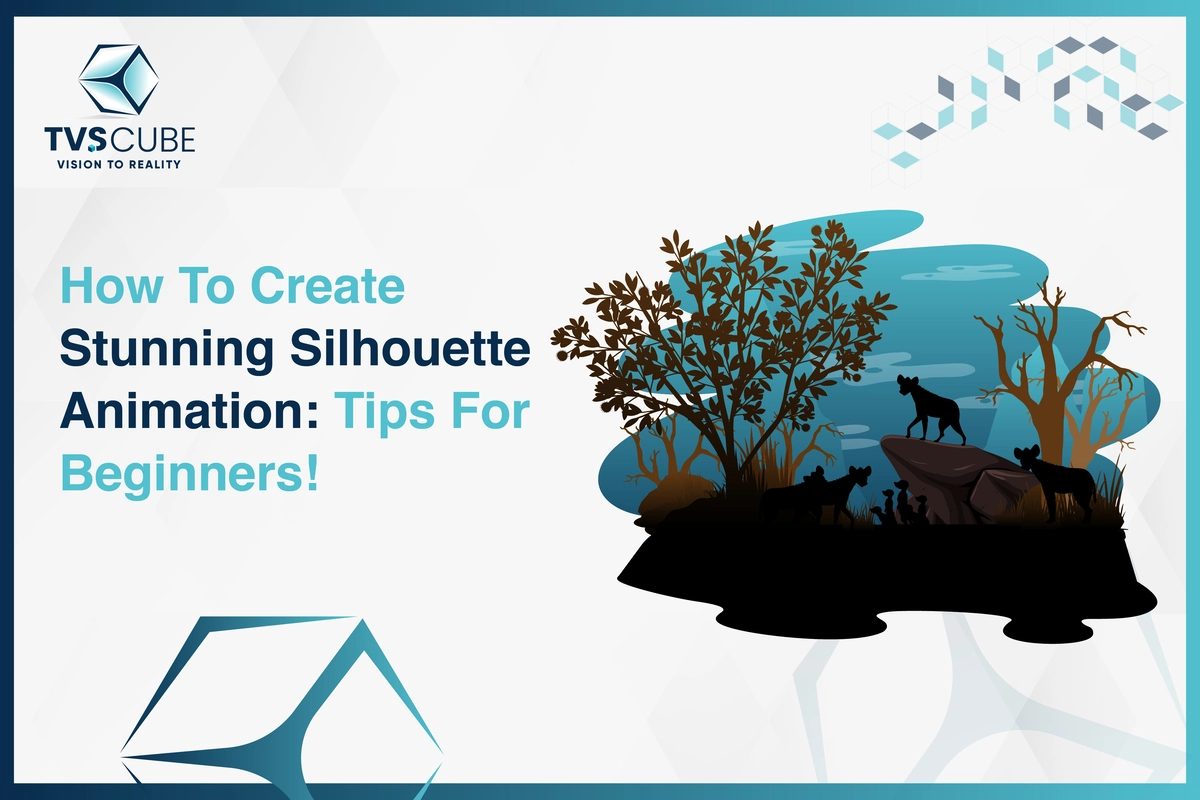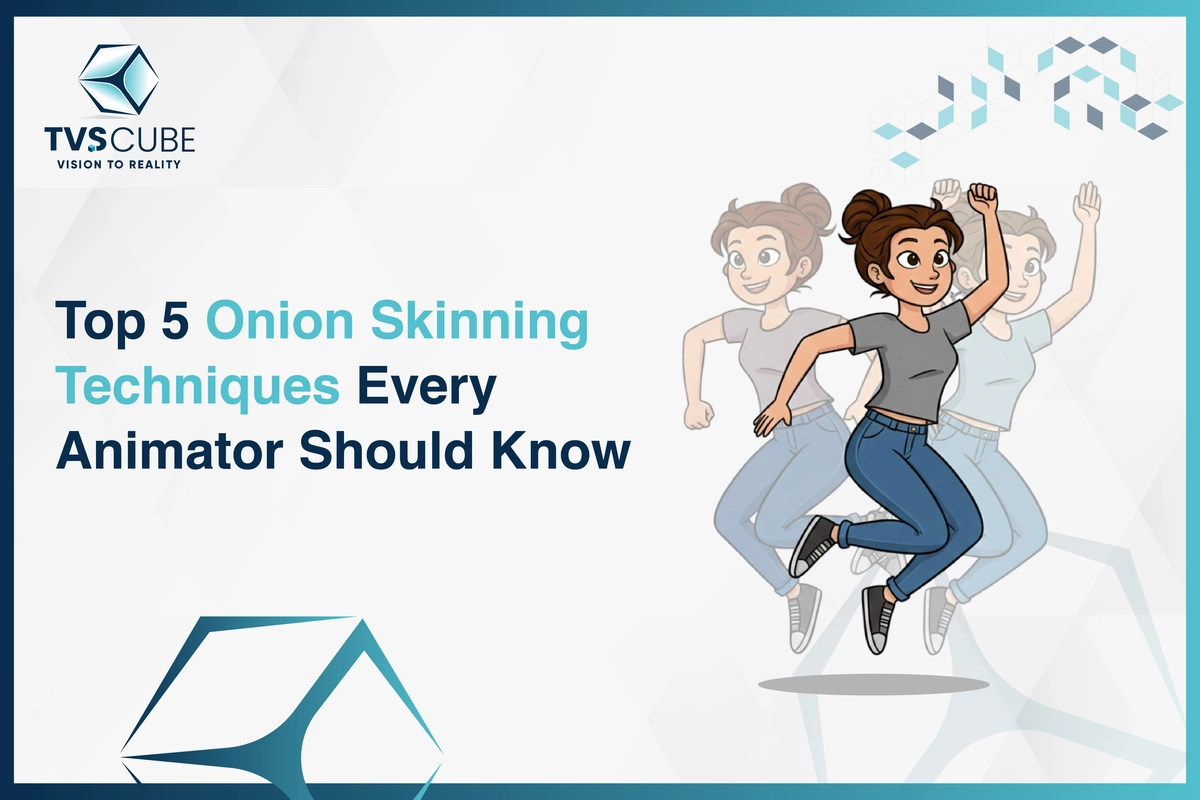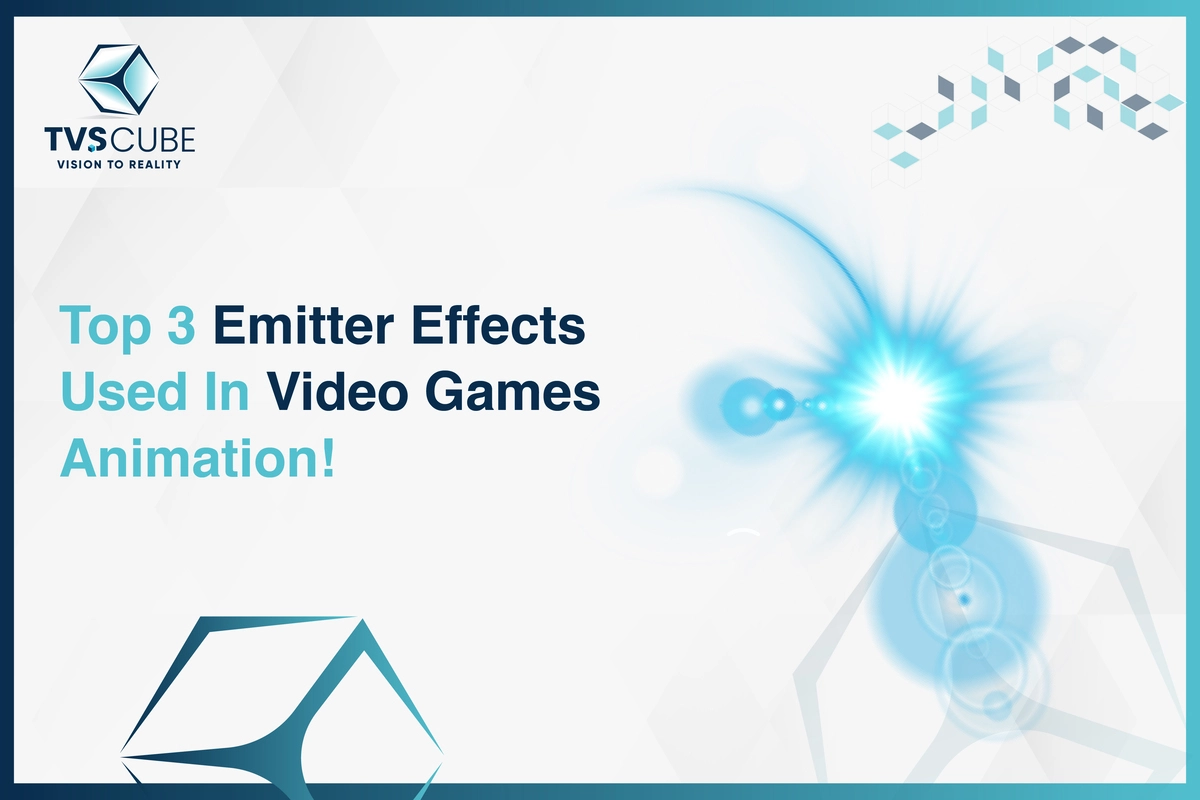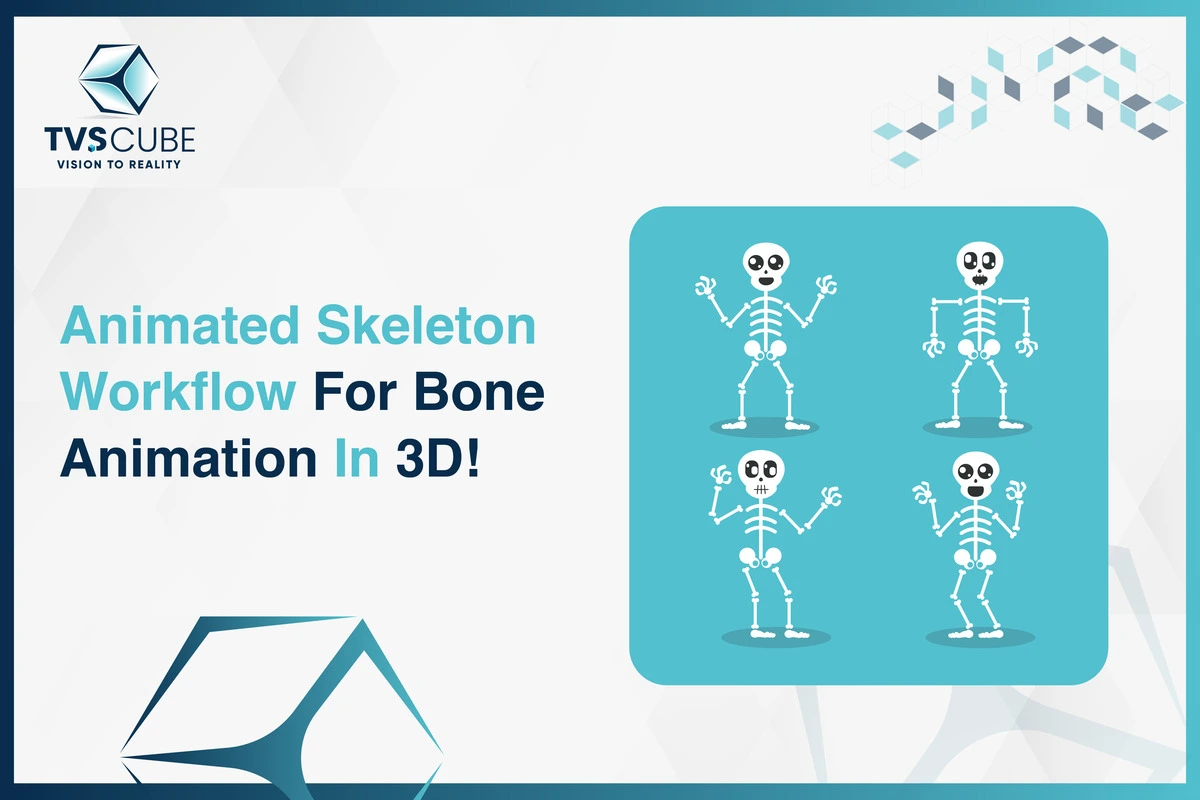There’s something hauntingly beautiful about storytelling in shadows —no color, no faces, just pure motion and feeling. Silhouette animation cuts through distractions and makes motion more intense than detail. It is a minimalist yet incredibly effective style that speaks profoundly without breaking the bank. Whether explainers, 2D medical animations or social ads, it fits any shape perfectly. This new art form gives brands a fresh, emotionally engaging way of speaking to people.
At TVS Cube, we bring it to life through custom 2D and 3D silhouette animations tailored to your brand’s voice.
What is Silhouette Animation?
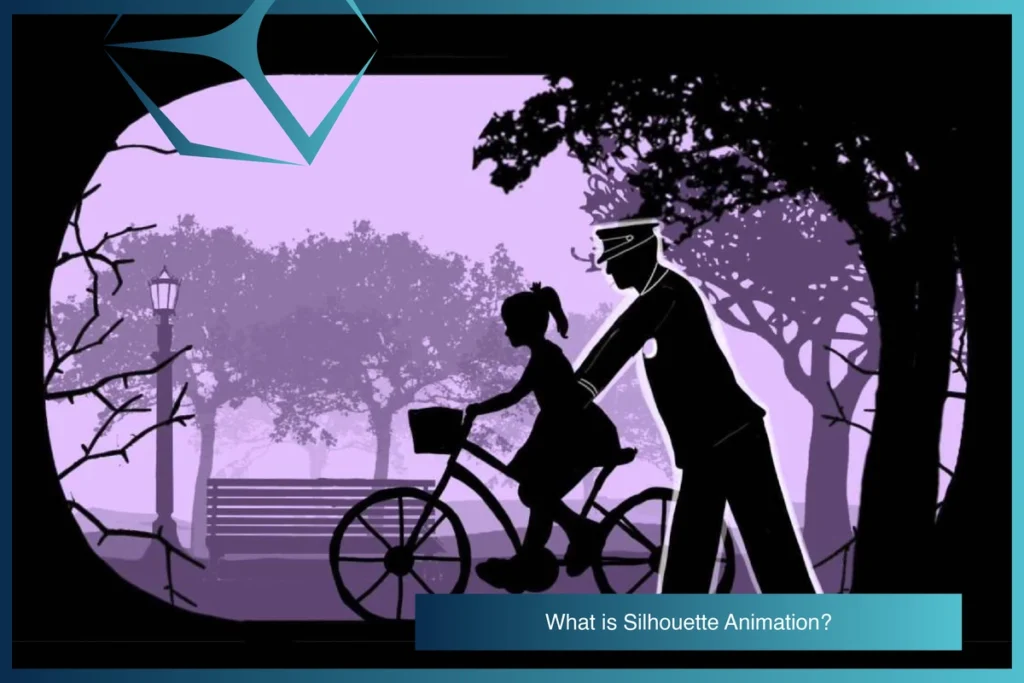
Silhouette animation employs black silhouettes against light backgrounds in order to narrate stories in motion, but not on the face. It is founded upon movement and posture to express emotion and narrative. It makes the shadows the most compelling medium for storytelling. It’s dramatic, being a form of art, and ideal for impactful visual content.
Why is it called a silhouette?
The term silhouette comes from Étienne de Silhouette, a frugal 1700s French finance minister. His name became linked to inexpensive shadow-style portraits, giving rise to the term for simplified, shadowed imagery.
A Brief History of Silhouette Animation
Developed in the early 20th century, silhouette animation was originally created by Lotte Reiniger’s 1926 animated film The Adventures of Prince Achmed with exquisite cut-out paper characters. As animation developed over the years, silhouette animation has moved from hand-crafted to computer media. The emotion quotient and artistic appeal of silhouette animation are not affected by the shift. The technique is now used in the form of explainer videos, commercials, music videos, and shorts—mixing old-school visual appeal and new-age narrative.
The Evolution of Silhouette Animation
Silhouette animation started out with cut-out paper puppets and transitioned to digital manifestations with the use of software such as After Effects for higher-level, layered graphics.
We match this old medium at TVS Cube with contemporary 2D and 3D animation services in a bid to create striking, simple animations that distinguish your brands.

How To Create Stunning Silhouette Animation
It’s about creating silhouette animation with radical minimalism and radical feeling. It’s not simply doing shadow forms — it’s how the forms move, interact, and tell the story without needing facial expressions or color.
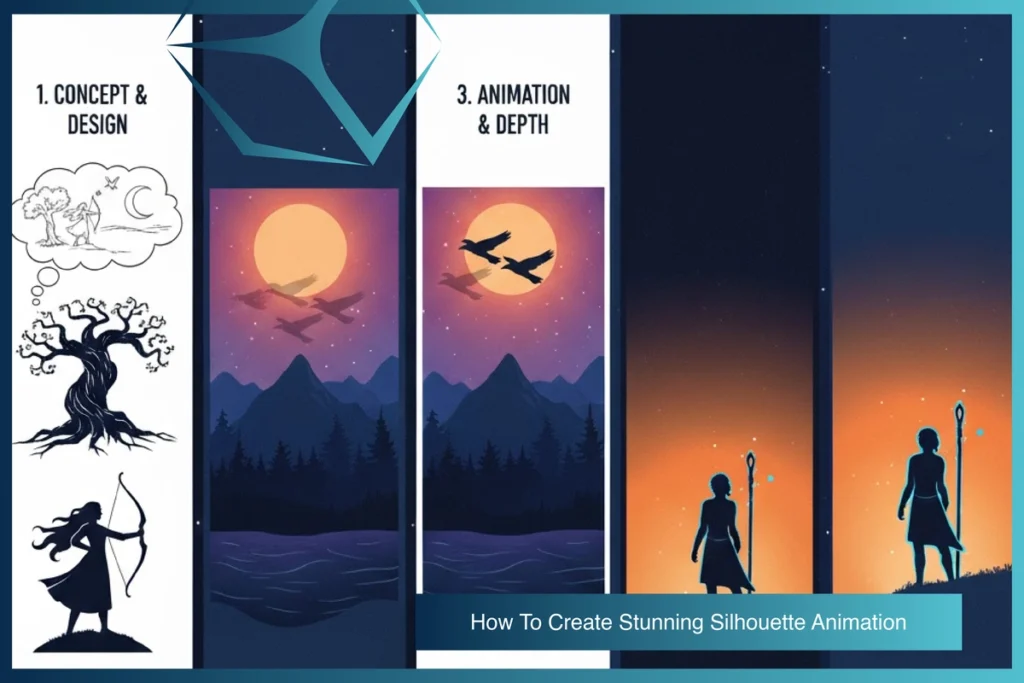
Here’s a quick breakdown of the process:
- Start with a Strong Concept: Since details are limited, your storyline and character movements need to be crystal clear from the beginning.
- Design Bold Outlines: Focus on distinctive character shapes and body language that are easy to recognize in silhouette form.
- Use a Backlit or High-Contrast Look: Whether traditional or digital, the background should contrast sharply with the character to emphasize the silhouette.
- Animate Expressive Motion: Every gesture counts — exaggerate movements to convey emotions like joy, fear, or determination.
- Add Sound and Music Thoughtfully: Without facial expressions, audio becomes your emotional amplifier. Sync it well with the visuals.
- Refine with Modern Tools: Use 2D or 3D animation software to bring in smooth transitions, dynamic lighting, and effects that enhance the shadow play without cluttering the frame.
At TVS Cube, we use a combination of these creative and technical steps to craft silhouette animations that are both visually arresting and emotionally rich — turning simplicity into a storytelling superpower.
How to Start Animation for Beginners Step by Step?
Beginning your animation journey can seem daunting, but simplifying it into easy steps makes it accessible — even enjoyable. Below is a beginner’s guide to kick-start:
1. Understand the Basics of Animation
Learn basic concepts such as frames, keyframes, timing, spacing, squash and stretch, anticipation, and motion arcs. These are the foundations of all animation styles.
2. Pick Your Animation Style
Decide whether you want to begin with 2D animation, 3D animation, stop-motion, or even silhouette animation. For beginners, 2D is often the easiest starting point.
3. Choose the Right Software
Start with beginner-friendly tools like:
- Pencil2D or Krita for 2D
- Blender for 3D (free and powerful)
- RoughAnimator for frame-by-frame animation
4. Learn to Sketch or Use Assets
You don’t need to be a professional artist. Practice drawing basic poses or use pre-made assets to focus more on movement and storytelling.
5. Practice Simple Movements
Begin with walk cycles, bouncing balls, or blinking eyes. These help you understand timing and body mechanics.
6. Use Storyboards and Animatics
Sketch out your scenes roughly before animating. This helps organize your ideas and saves time.
7. Animate Small Projects
Create short clips (5–10 seconds). Focus on one concept at a time—like emotion, physics, or action—to build skill and confidence.
8. Study and Get Inspired
Watch animations, break down how characters move, and explore different animation techniques, including silhouette animation.
9. Keep Practicing and Getting Feedback
Share your work online or with peers. Feedback helps you grow faster and better.
10. Explore Professional Services (When Ready)
Along the way, you can also work with animation studios such as TVS Cube, where experts assist in turning ideas into industry-standard motion as 2D, 3D, and new animation formats — silhouette among them.
Start small and keep at it. Animation is all about bringing stories to life, one frame at a time.
Techniques for Creating Silhouette Animation
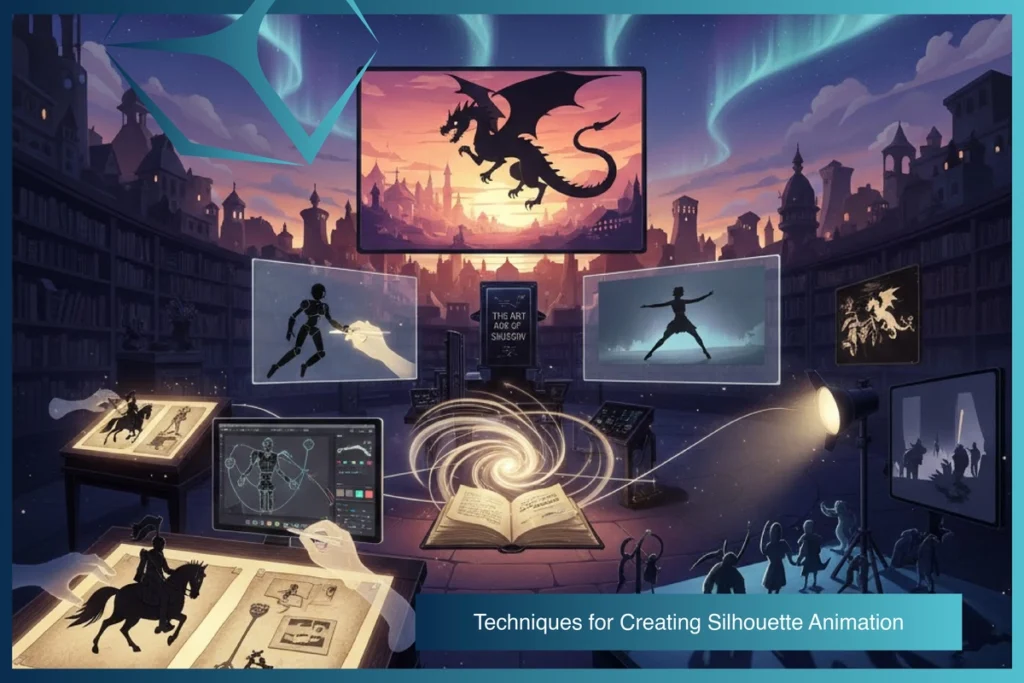
Silhouette animation is based on shape, contrast, and movement, but not detail or color. To master this distinctive art, pay attention to three key techniques that make your images pop and your stories leap off the screen:
1. Essential Materials: Black Paper, Light Sources, and Backgrounds
The heart of silhouette animation lies in contrast. Start by gathering:
- Black paper or cut-out characters: These form your silhouettes. Use sturdy cardstock for crisp, bold shapes.
- Strong backlighting: Place a light source behind your subject to highlight the silhouette effect. LED panels or softbox lights work great.
- Neutral or white backgrounds: A clean, evenly lit surface (like white cloth or frosted glass) makes the silhouette stand out dramatically.
Pro Tip: Avoid front lighting—it kills the shadow effect. Always light from behind to achieve clean, sharp silhouettes.
2. Layering and Depth: Creating Scenes with Multiple Layers
To make your scenes feel dynamic and cinematic, use layered elements:
- Foreground: Closest to the viewer—often includes detailed character silhouettes.
- Midground: Secondary actions or supporting characters.
- Background: Trees, landscapes, props that add mood and setting.
Use transparent sheets or digital layers to move elements independently, giving a sense of depth and richness.
Animation Hack: Slight parallax shifts (slowly moving the background while the character moves faster) can simulate camera movement.
3. Tips for Smooth Transitions and Fluid Movements
Fluidity brings your silhouettes to life. Here’s how to keep movements believable:
- Use reference videos to mimic realistic motion in your animation.
- Apply easing in and easing out — start and end actions slowly for more natural transitions.
- Keep frame rate consistent: Most silhouette animations look smooth at 24 FPS (frames per second).
- Silhouette clarity is key: Always ensure the pose is readable even in solid black. Avoid overlapping limbs or cluttered shapes.
Pro Animator’s Rule: If the silhouette pose alone can’t tell the story, the movement needs work.
Modern Applications of Silhouette Animation
Silhouette animation developed from shadow puppetry to contemporary computer-generated art. Its simplicity yet emotionally evocative nature makes it an effective tool for storytelling by brands and movie producers who require simplicity and impact in the crowded society of today.
How Silhouette Animation is Used in Contemporary Media
Silhouette animation is employed by modern creators in explainer videos, social media, music videos, and so on. Its simple, clean visuality and emotional storytelling make it perfect for education, healthcare, nonprofits, and relatable storytelling.
Incorporating Digital Tools with Traditional Techniques
Silhouette animation has progressed from cutouts to computer software such as After Effects and Blender. Modern artists blend vintage imagery with modern motion graphics to produce layered, silky, and vintage-but-contemporary visuals.
Advantages of Creating Silhouette Animation in 2D or 3D
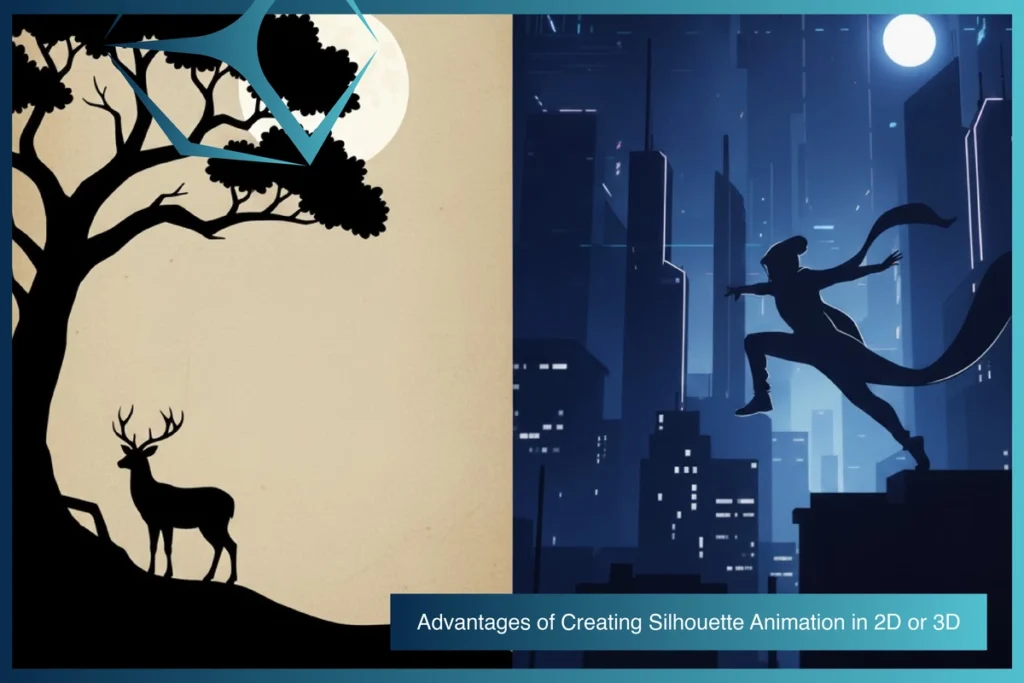
Silhouette animation in 2D or 3D tells powerful stories with simple visuals. TVS Cube,2D animation house We offer both styles, helping brands pick the best fit for their message, vision, and budget.
Advantages of 2D Silhouette Animation
1. Simplicity and Clarity
2D silhouette animation provides a clean and direct visual that highlights movement and emotion without distractions.
2. Cost-Effective Production
With fewer resources needed than full-color animation, 2D silhouettes are ideal for budget-friendly yet impactful storytelling.
3. Quick Turnaround Time
The production pipeline for 2D animation is faster, allowing creators to deliver content in shorter timeframes.
4. Perfect for Explainers and Campaigns
This style is ideal for explainer videos, educational content, or awareness campaigns where clarity and message delivery are key.
5. Easy to Style for Branding
Flat silhouettes can easily be customized to match a brand’s tone, using shapes and motion that reinforce identity.
5. Easy to Style for Branding
Flat silhouettes can easily be customized to match a brand’s tone, using shapes and motion that reinforce identity.
TVS Cube 2D Animation Services:
Our 2D animation agency offers 2D video animation services creating compelling silhouette sequences using industry-standard tools like Adobe Animate and After Effects—tailored to the unique needs of agencies, brands, and creators.
Advantages of 3D Silhouette Animation
1. Realistic Depth and Lighting
3D silhouettes add a cinematic feel with realistic lighting, shadows, and perspective—perfect for immersive visuals.
2. Dynamic Camera Movement
Unlike flat 2D visuals, 3D allows for sweeping camera angles, zoom-ins, and complex transitions for added drama.
3. High Visual Impact
3D silhouette scenes stand out due to their dimensional depth, making them perfect for intros, trailers, or branding.
4. Flexible Asset Reuse
3D assets can be reused and re-posed, allowing for efficient series production or content variations.
5. Ideal for Games & AR/VR Experiences
3D silhouettes can be integrated into interactive environments, games, and immersive digital spaces.
TVS Cube 3D Animation Services:
Our team of 3D animators works with the kind of professional software such as Blender and Cinema 4D to create engaging, shadow-driven narratives—just the thing gaming studios, product instructions, and movie productions need.

Understanding the Core Elements of Silhouette Animation
Silhouette animation is a technique for storytelling with their use to govern motion and emotion through shadows, outlines, and contrast. That is, it’s a style of conveying form, posture, and motion in order to tell the story instead of colors or facial expressions. Following is a discussion of its conceptual elements:
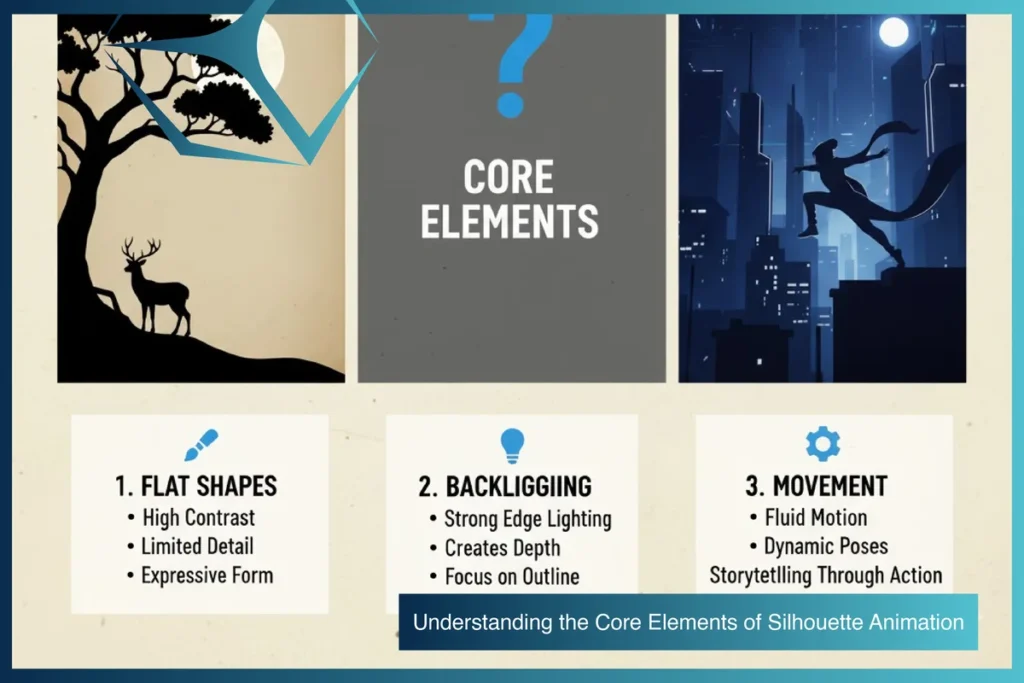
1. Character Silhouettes
The characters are constructed in solid black form with no inside details. Their emotion and identity are indicated through pose, gesture, and body language. Which means that the characters require strong character design that is instant recognizable at silhouette profile.
2. Backlighting and Contrast
Backlighting is used to silhouette the dark forms over a light background. It may be a lightbox or a glowing screen. Backlighting assists in providing that traditional visual contrast that characterizes silhouette animation.
3. Minimalistic Environments
Backdrops are generally easy-to-follow character movements. Structures like trees, furniture, or buildings are simplified into their basic shapes and used sparingly to give the scene its environment without distraction.
4. Fluid Movement
As there is no facial detail, movement will be the primary source of expression. Smooth movement, timing, and natural body physics are crucial in delivering scenes that will be believable and emotionally resonating.
5. Layering and Depth
Even in silhouette shape, layers to the fore and back create depth. Overlapping objects and different speeds of motion through layers can mimic a 3D environment.
We at TVS Cube design 2D and 3D silhouette animation that combines conventional artistry with contemporary technology to provide visually engaging and emotionally engaging narratives.
Mastering Silhouette Animation Techniques
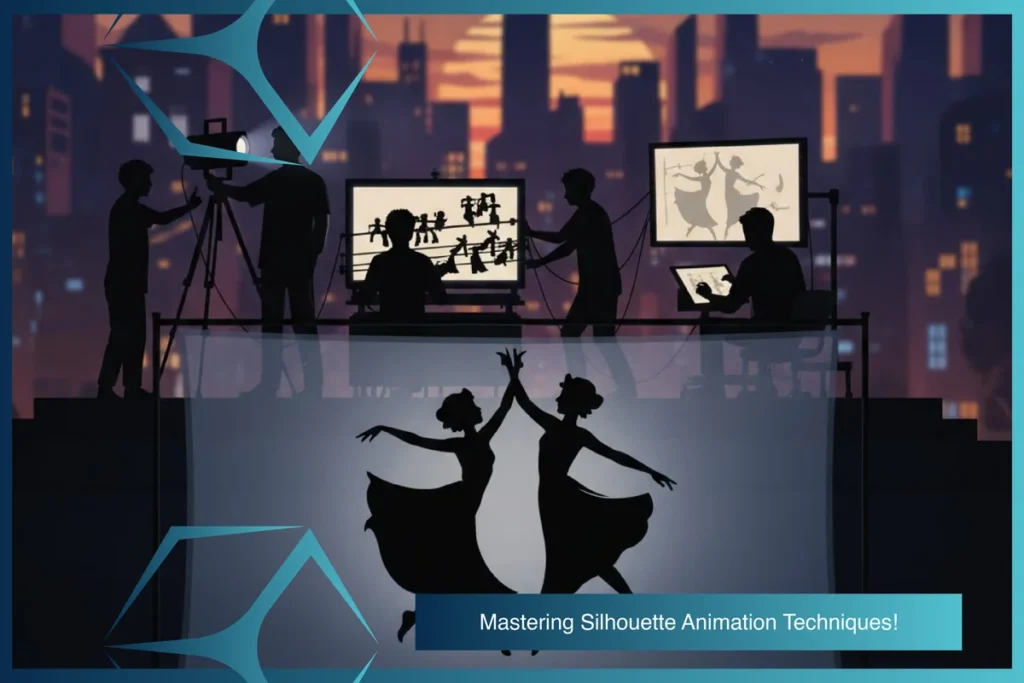
Silhouette animation is a stylistic technique that has a bit of bite. Form, movement, and restraint are what it focuses on, rather than actual detail of color or texture. To execute the technique properly, you will have to become well-acquainted with form, light, and movement. Whether you’re animating 2D sections or intricate 3D sequences, it’s all the same.
Modeling and Rigging for Strong Silhouettes
Creating strong silhouettes starts at the modeling stage. Characters and objects must be shaped with clear, readable outlines that remain recognizable even without color or detail.
In 2D animation, this means designing bold and exaggerated poses.
In 3D, it involves sculpting forms that maintain clarity from multiple angles.
Rigging plays a crucial role—smooth joint movements, well-placed pivot points, and flexible skeletons ensure fluid and expressive animation.
Lighting and Shading Techniques in Blender
In silhouette animation, lighting isn’t about adding depth—it’s about defining contrast. The goal is to highlight the shape, not the surface.
- Use backlighting or rim lights to push figures into sharp relief.
- Apply shadeless materials or set shaders to completely black for character meshes.
- Position lights behind the subject to create a crisp divide between the dark object and the bright background.
Blender’s Eevee and Cycles render engines offer excellent control for crafting perfectly balanced lighting setups that elevate the silhouette aesthetic.
Rendering and Exporting Silhouette Animations
Once your animation and lighting are locked in, rendering ensures your silhouettes appear crisp and clean on screen.
- Choose high-resolution formats (like PNG or EXR) with alpha transparency for layering.
- Keep background light tones consistent and noise-free.
- Use Blender’s render passes to isolate shadows, silhouettes, or background elements for better control in post-production.
TVS Cube offers professional 2D and 3D animation services, including advanced rigging, lighting, and rendering techniques tailored for silhouette-style visuals that leave a lasting impression.

Final Thoughts!
To wrap up, silhouette animation tells strong, emotionally charged tales in bold simplicity through the use of shape, movement, and contrast. It has classic visual stature whether created in 2D or 3D. At TVS Cube, our skilled animation solutions translate such bold ideas into moving graphics—words cannot do it justice.
Read Also : Let’s Animate Your Message with TVS Cube’s Animation Services
Reference:
Gamer2maker : What is Silhouette Animation & How to Create Them Using Blender 3D
Garagefram.net: What is Silhouette Animation?





